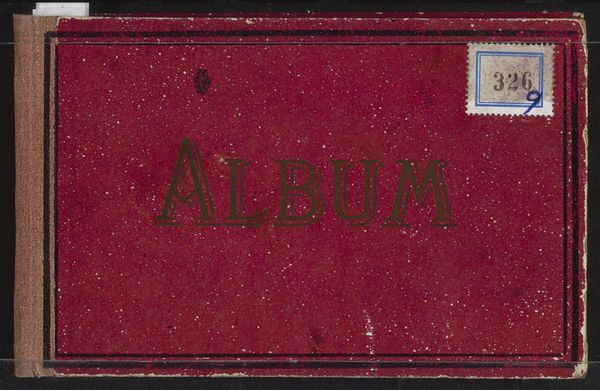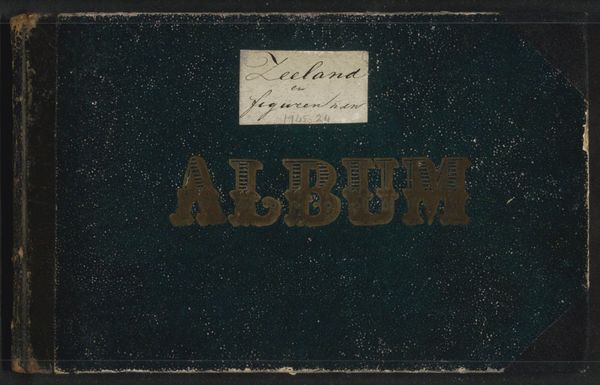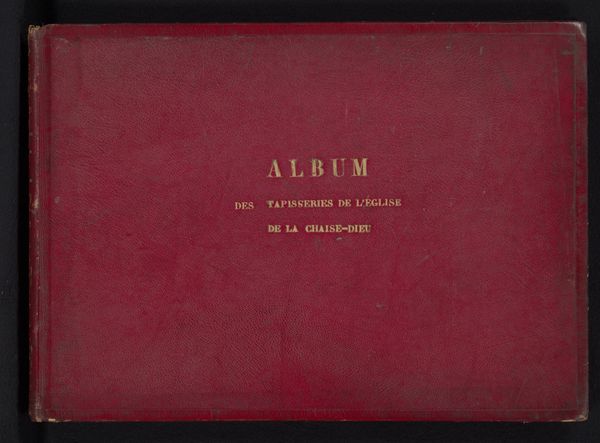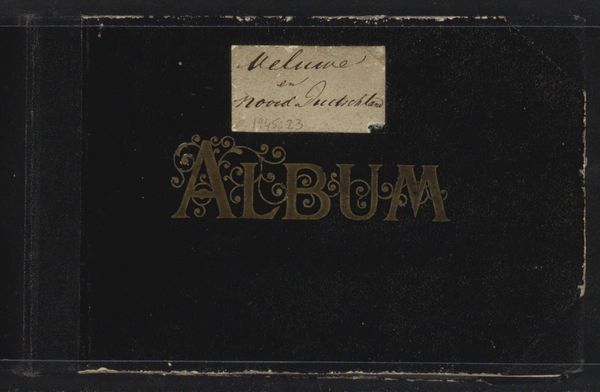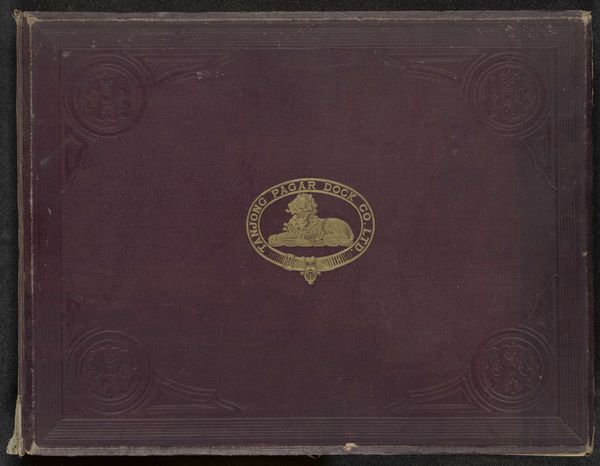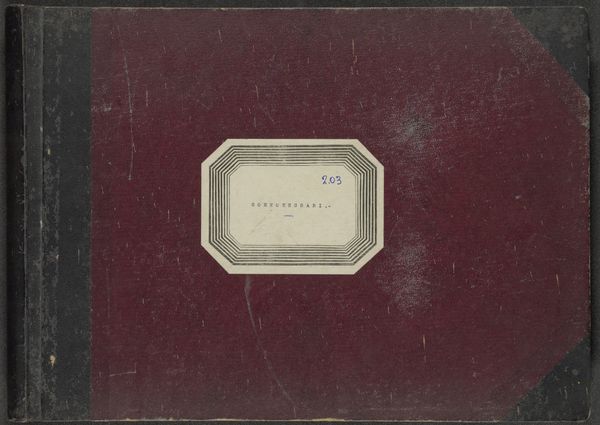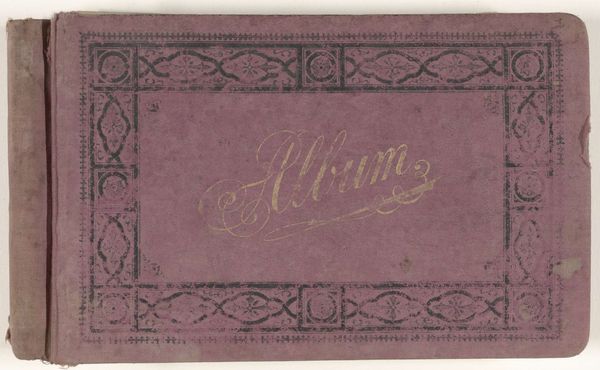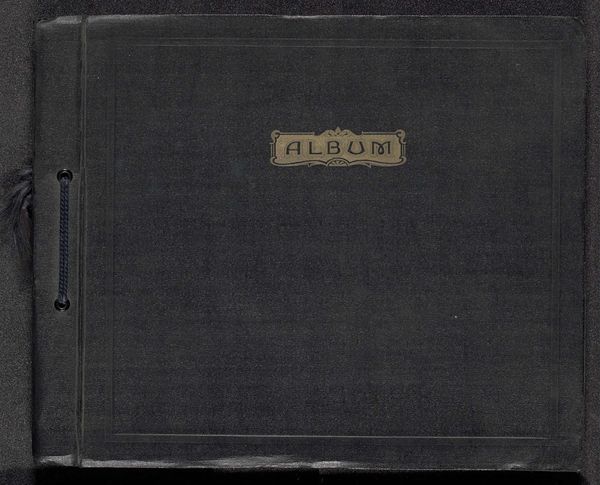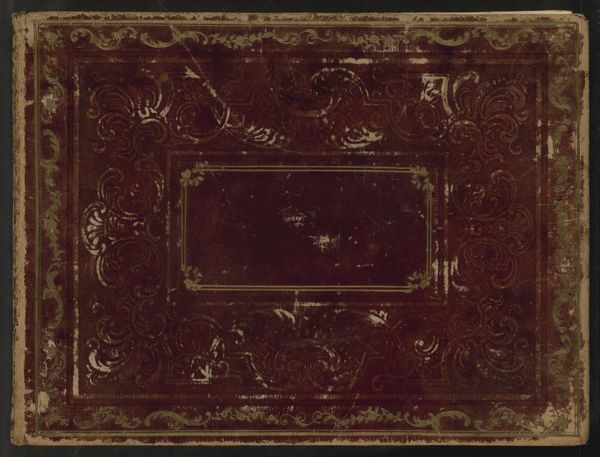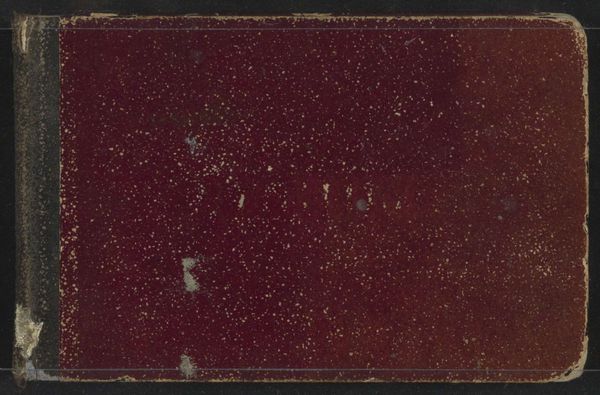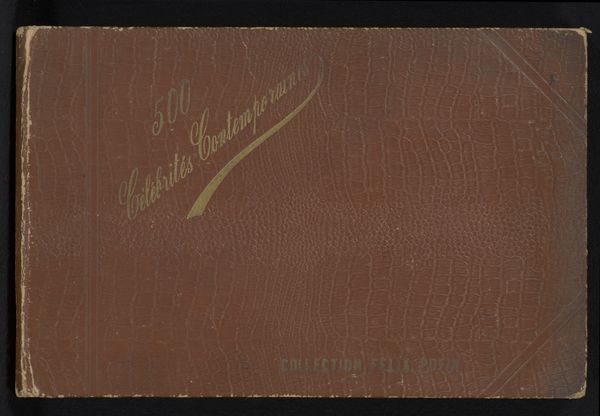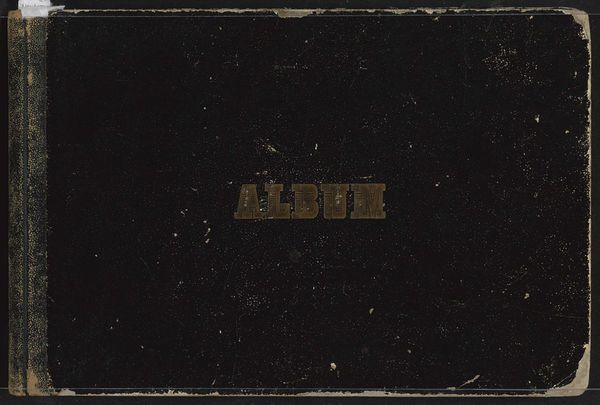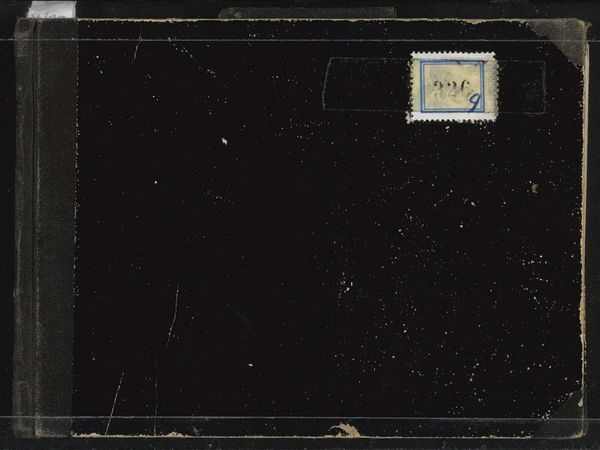
Dimensions: height 179 mm, width 285 mm, thickness 16 mm, width 561 mm
Copyright: Rijks Museum: Open Domain
Curator: What a beautifully preserved object. This is Maria Vos' "Sketchbook with 55 Pages," dating from around 1860 to 1865. It's an albumen print. Editor: It looks aged, and heavily textured—like worn leather with faint embossed patterns. I'm immediately drawn to its tactile quality and how the "Album" title is almost bursting off the cover. It makes me wonder about who might have handled it, and what memories it contained. Curator: That haptic appeal really does speak to its significance as a crafted object. It would have been a luxury item and speaks to shifting notions of both memory and women’s roles at that time. Think of the social expectation that women cultivated networks and curated memories in albums. Editor: Right, and the actual materials and construction play a huge part in this! Albumen prints—photography— were relatively new but think of the labor involved in preparing the paper, taking and printing images, and binding all this together with a textile. It's far removed from our current digital photo culture, which is interesting because we, now, struggle with many of the same issues, like curation, memorialization, and social visibility. Curator: Indeed, thinking about this in a contemporary context, who had access to such an object? Albums like this performed as archives for families of certain means, offering a curated representation that both reflects and perpetuates particular social structures and privileges. The visual and material culture shaped class identity as much as gendered ones. Editor: I wonder how much agency women of the time had over image selection and presentation. How were such choices reflective of women's role in creating visual identity in the 19th century? Was it itself a form of quiet, carefully mediated, rebellion? Curator: Exactly! These albums provide incredible insights into how gender roles were performed through material culture and mediated visual strategies. The presentation itself becomes a narrative act, particularly powerful in what and who gets foregrounded, omitted, and remembered. Editor: It is so valuable to consider how we engage with albums in today's digital, easily distributed formats, and what kinds of memory strategies were created in earlier eras, and, of course, to consider that production of such beauty, and for the families that could afford it, meant labor and, perhaps, suffering, for others. Curator: I’ll be pondering the tensions between image and labor now for a while!
Comments
No comments
Be the first to comment and join the conversation on the ultimate creative platform.
